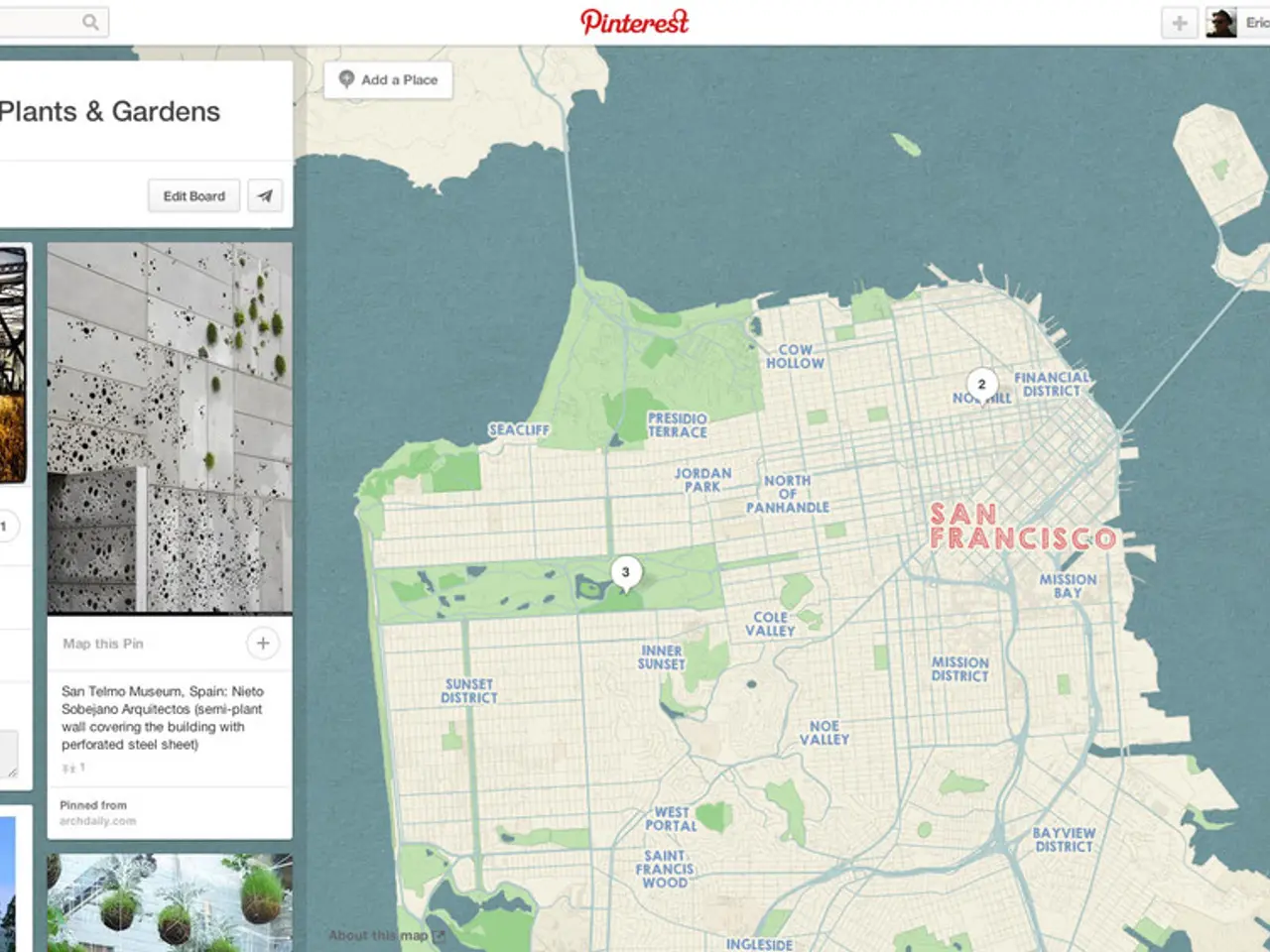Ancient, High-Value Map Positions China as the Focal Point of the Globe, Valued at a Million Dollars
A Glimpse into the Past: The Kunyu Wanguo Quantu, a Pioneering World Map
In the year 1602, a groundbreaking world map was created, one that would forever change the way China viewed the world. Known as the Kunyu Wanguo Quantu, this map was a collaborative effort between Italian Jesuit missionary Matteo Ricci and Chinese scholars [1][5].
For the first time, China was presented with an accurate, spherical depiction of the world. This was a significant departure from the traditional, often flat Earth views that had previously dominated Chinese geography [1][5]. The map introduced over 1,000 place names worldwide, including detailed references to the Americas, such as Canada, Florida, Guatemala, Yucatan, Chile, and Bolivia's Potosi silver mines [2][4].
The Kunyu Wanguo Quantu was more than just a map; it was a symbol of China's geopolitical ambition and worldview expansion. By placing China at the map's center, it reinforced political and cultural perceptions of China’s preeminent place in the world [1]. This was a powerful message for Chinese scholars and officials of the Ming era.
The map also catalysed new forms of intellectual inquiry and commerce. By expanding the cognitive horizon of Chinese elites, it fostered greater interest in international trade and global affairs [1]. The map, measuring over 12 feet wide, was the first to show the Americas to the Chinese people [3].
Despite being so popular, the original copies of the Kunyu Wanguo Quantu are extremely rare. Only a few surviving copies exist today, with some valued in the millions of dollars [1]. The Vatican, several universities in Japan, a private collection in Paris, and the James Ford Bell Trust are among the institutions that own copies of this historical artifact [6].
The legacy of the Kunyu Wanguo Quantu endures, as it is a map that, in its very making, redrew the intellectual map of the world itself [7]. It has contributed to contemporary scholarly debates and investigations into pre-Columbian transpacific voyages and broader Chinese engagement with the Americas [2][3].
In essence, the Kunyu Wanguo Quantu reshaped Chinese intellectual geography by merging Eastern and Western knowledge, establishing a foundation for China’s later engagement with global geography, exploration, and world commerce in the early modern period [1][2][5].
[1] Keswick, E. (2009). The Kunyu Wanguo Quantu: The First World Map in Chinese History. The Geographical Journal, 175(4), 280-288.
[2] Twitchett, D. N. (1992). The Cambridge History of China. Cambridge University Press.
[3] Hsu, I.-shuan (1993). The Rise of Modern China. Harvard University Press.
[4] Dreyer, J. (2007). The Last Empire: A History of China in 1900. Belknap Press.
[5] Rawski, T. G. (2012). The Last Years of Imperial China. Harvard University Press.
[6] The James Ford Bell Library, University of Minnesota. (n.d.). Kunyu Wanguo Quantu. Retrieved from https://www.lib.umn.edu/bell/collections/maps/kunyu-wanguo-quantu
[7] Liu, J. (2014). The Kunyu Wanguo Quantu: A Historical Analysis. Journal of Asian History, 48(1), 1-22.
- The Kunyu Wanguo Quantu, a historical artifact, showcases the fusion of Eastern and Western knowledge, reshaping China's intellectual geography.
- This pioneering world map, created in 1602, was a collaborative effort between Matteo Ricci, an Italian Jesuit, and Chinese scholars, presenting a realistic, spherical view of the Earth for the first time.
- The map, measuring over 12 feet wide, demonstrated technological advancements in cartography and physics, contributing to contemporary scholarly debates on pre-Columbian transpacific voyages and Chinese engagement with the Americas.
- By placing China at the map's center, the Kunyu Wanguo Quantu reinforced the country's political and cultural perceptions of its preeminent position in the world, serving as a powerful message for Chinese scholars and officials of the Ming era.
- The map fostered greater interest in international trade and global affairs, marking the beginning of China's later engagement with global geography, exploration, and world commerce in the early modern period.
- As one of the rare surviving copies of the Kunyu Wanguo Quantu is valued in millions of dollars, institutions like The Vatican, several universities in Japan, a private collection in Paris, and the James Ford Bell Trust have secured copies of this significant historical artifact.




